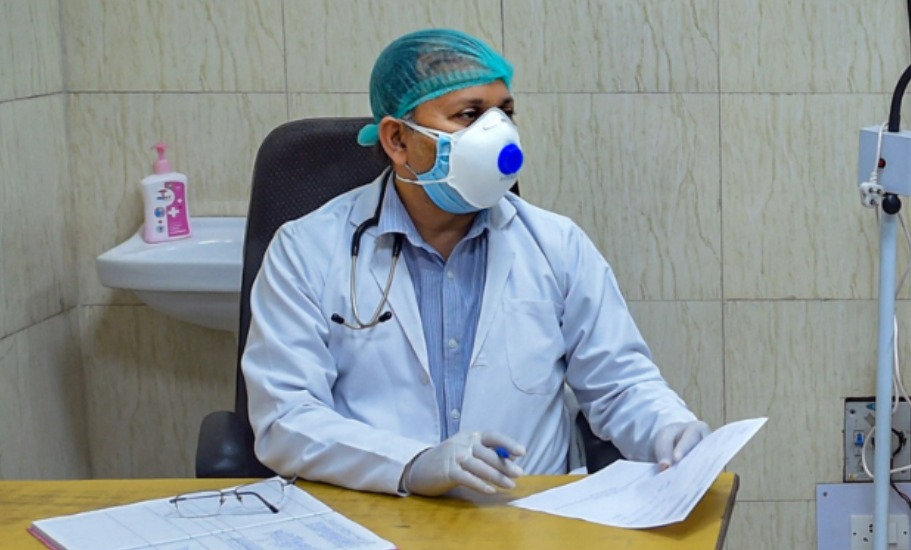
Hospitals face shortage of doctors, nurses; govt focused on increasing beds

As the number of beds in private hospitals for COVID-19 patients is being increased, there are complaints of acute shortage of manpower — doctors, nurses and other paramedical staff to treat coronavirus patients, putting further stress on the city’s health infrastructure.
Private hospitals say the shortage is due to a lack of experts to treat coronavirus-related complications and because a large number of healthcare staff have to undergo quarantine. Many medical professionals have quit their jobs due to fear of infection or family pressure, while others have demanded more money and insurance.
Demoralised staff, lack of government support, infection among healthcare workers, reluctance of families to allow their loved ones to work in COVID wards, patients preferring private facilities over government hospitals are also some reasons why private hospitals in the national capital are facing a shortage of staff.
Related News: ITBP takes over Delhi’s 10,000 bed COVID-19 care centre
Amid a surge in coronavirus cases and the government’s impetus on increasing beds by turning banquet halls and hotels into COVID facilities and attaching them with hospitals, the managements of these hospitals are faced with their own internal crisis.
At the Delhi Heart and Lung Institute (DHLI), a quarter of nurses had quit even before the hospital was converted into a COVID facility while another 15 percent nurses quit after it was turned into a coronavirus facility, citing reasons like parental pressure, lack of transportation and personal fears and anxieties, according to hospital officials.
Similarly, at Saroj Super Speciality Hospital in Rohini, 40 to 50 percent of nurses stopped reporting to work citing similar reasons, said an official.
“There is a shortage of doctors. Our hospital has a cardiac unit and our doctors are trained to handle those cases. But with a disease that is hitherto unknown, you need many kinds of specialists, like internal medicine, respiratory medicine specialists, etc. They are not available, said Dr KK Sethi, chairman, DHLI.
The resident doctors who handle emergency units are refusing to work. Nobody wants to join the hospital if you tell them they will have to work in COVID wards. Those who are willing to work are asking for exorbitant salaries, almost three to four times what they would usually get, he said.
Related News: COVID-19: ‘Air Venti’ app to provide information on ICU beds, ventilators
The Delhi government is increasing bed capacity in the national capital to tackle coronavirus cases, which are expected to touch 5.5 lakh by the end of next month, but experts feel it’s being done without keeping in mind the human factor.
Dr RK Mani, Medical Director & Chairman, Critical Care & Pulmonology, Batra Hospital, said it is important to maintain an optimal doctor-patient and nurse-patient ratio.
“Increase in bed without appropriate increase in staff is not ideal. There is a greater chance of infection to healthcare workers and among patients. There are issues of loss of morale, exhaustion, and burnout. They may get aggravated to the point that people may choose to leave their jobs,” he said.
Explaining the optimal ratio, he said in ICUs there should be one nurse for not more than three patients and outside the ICU, the ratio should be one nurse for not more than six to eight patients. Similarly, a doctor cannot see more than eight patients in the ICU.
Preference of patients to visit private hospitals over government hospitals is another reason that is burdening the private healthcare system, he said. According to Dr Chander Prakash, president of the Delhi Voluntary Hospital Forum, in government facilities 60 percent beds are vacant.
“In private hospitals, the staff was being given perks like vacations, pick and drop facilities, and other allowances. Now the government has capped the charges. From where will the hospital pay? he asked. There has also been an increase in the cost of PPE kits, sanitisers, and masks, he said. Dr Sethi added that the increase in the use of disposables, masks, and other items which have burdened hospitals.
Related news: COVID-19: Bed shortage in govt hospitals forces patients to move to pvt centres
Adding to the list of problems is the rising number of healthcare workers being infected. As many as 313 healthcare workers have been infected at Sir Ganga Ram Hospital till now. On Tuesday (June 23), two nurses and three doctors tested positive at Saroj Hospital. Nearly 2,000 health workers including doctors and nurses have contracted COVID-19 in Delhi so far.
The dearth of hospital staff is so bad that the staffers at DHLI who have come in contact with other staff members who have tested positive are being called to work. “They are allowed to come but we monitor them and see that they are not developing symptoms,” said Sethi.
On Wednesday (June 24), the Delhi government had directed all state-run hospitals to extend the terms of senior resident and junior resident doctors, who are going to complete their tenures, by six months to meet the shortage of doctors in view of the spike in coronavirus cases.
Dr Girish Tyagi, president of Delhi Medical Association, said they have suggested to the government to rope in nursing students or interns. He also suggested that states where the number of coronavirus cases are less can also be asked for help by the government.
“The city government can ask them to transfer some doctors and nurses here. Then there are homeopathic doctors and dental surgeons who can be utilised,” he said.

